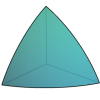 User Portlet
User Portlet

| Discussions |
|---|
| It seems that `ListLinePlot` is expected. Try: Manipulate[ ListLinePlot@Table[n^p,{n,1,100}],{p,-1,1} ] |
| Maybe: trefoil[t_] := {Sin[t] - 2 Sin[2 t], Cos[t] + 2 Cos[2 t], -Sin[3 t]} ParametricPlot3D[trefoil[t],{t,0,2 Pi},Boxed->False,Axes->False, ViewPoint->{0,0,50},ViewVertical->{0,-1,0},PlotRange->4, ... |
| The documentation example returns `False` also in version 13.3. Version 12.3 gives the expected output. |
| David Park has developed a geometric (Grassmann) algebra package. Check his [community profile][1]. It has a dropbox link from where the package can be downloaded. [1]: https://community.wolfram.com/web/djmpark |
| Jason, what is wrong with the `opt___Rule` method? Isn't this just a matter of coding style? |
| `ValueQ` was updated in 12.2. One gets the book behaviour with the option `Method->"Legacy"`. See documentation for `ValueQ`, the Details section. a[b][1] = x; ValueQ[a[b], Method -> "Legacy"] |
| I will try to answer three of your questions. 1) Each notebook has an option `CellContext`. The option value is stored within each notebook. 3) While preparing this post I have seen that the Evaluate[Context ... syntax is no longer needed.... |
| You could represent the base, here 6, by a symbol: (a^40)/(a^20) (* a^20 *) In WolframAlpha: ![enter image description here][1] [1]:... |
| Gianluca has shown that `PowerExpand` does what you want. Another way to do it is with `Simplify`, with its second argument restricting the base to be a positive real number: Simplify[Sqrt[x^(9/2)], x > 0] (* x^(9/4) *) |
